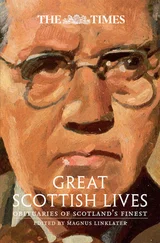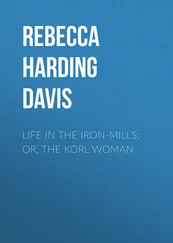Unfortunately it was not quite so simple: in reality there were many complex issues at stake. Firstly, the driver would have to judge whether he or she could stop the bus smoothly without having to slam the brakes on. Sudden halts could be jarring to both driver and passengers alike, and tended to disrupt the overall ‘flow’ of the bus. Consideration also had to be given to the opinions of the people already on board. While some of them might be sympathetic towards the runner, others certainly may not, and hence a balance needed to be struck. Another important influencing factor was the question of time: if the bus was late then stopping for runners would only help to make it even later. Clearly in these circumstances the act of leaving people behind was an unavoidable necessity. Furthermore, the driver may be aware of another bus travelling close astern which would be in a much better position to stop and pick them up. Whether it actually did or not was an entirely different matter. Finally, some drivers were disinclined to stop because they just didn’t think it was worth it. Experience told them that most runners only wished to travel a short distance before getting off again. Besides which, the gesture was seldom appreciated: people only remembered the buses that went without them, never the ones that waited.
In the era of the VPB, of course, there was plenty of scope for compromise. Drivers could slow down and allow the more athletic runners to leap aboard without bringing the bus to a complete halt. In the past, conductors could often be seen standing on their platforms offering verbal encouragement to such valiant individuals as they ran along behind. ‘Having a go’ was considered highly dangerous and officially frowned upon. Without doubt it contributed to the demise of the open platform. Nevertheless, it was a common practice for years and led to the expression ‘catching a bus’.
This itself was a misnomer: people only caught buses if the driver allowed it to happen.
Jason, it goes without saying, had very strong views on the subject. Indeed, any mention of ‘catching a bus’ tended particularly to rankle him.
“The way people talk you’d think they were big game hunters stalking tigers through the jungle,” he said. “Or out in the ocean reeling in swordfish and marlon: “Ooh, I had a struggle catching the bus this morning!” For fuck’s sake, it’s pathetic! There’s a fucking bus every eight minutes! What’s so challenging about that?!”
“Maybe it seems different from where they are,” I suggested.
“Huh,” said Jason.
Personally I tried to maintain a fair and measured outlook, but at times it could be difficult. After all, it was much easier to keep going than to stop and wait for runners. Sometimes a kindly act could even backfire. Once I waited a whole minute at a bus stop for a man who was running desperately through the early morning gloom. Only when he ran straight past me and continued up the road did I realise he was a jogger. In the final analysis the question of runners was a matter for discretion. As a point of reference, the rule book stated that we were supposed to wait for all ‘intending passengers’.
Jason’s verdict was different. “People wait for buses,” he said. “Buses don’t wait for people.”
We also drove at night. Our garage operated a ‘round-the-clock’ service (almost): the last bus didn’t finish until a quarter to two in the morning, and periodically I was required to take the wheel. These late-night duties were long-haul affairs stretching over many hours: a far cry from the short-duration ‘early turns’ which were a doddle by comparison. Occasionally I managed to swap my duty with someone else, but at other times I simply had to buckle down and do it myself.
This particular duty started at the beginning of the ‘rush hour’: an hour which quite often extended well into the evening. Buses forged back and forth in pursuit of other buses. Every road was busy, and the busiest of all was the bejewelled thoroughfare, which acted as a confluence for many assorted bus routes. Eastbound buses flogged towards the cross carrying their burden of crazed people, all desperately attempting to make connections with express trains. Other buses headed for ‘theatreland’, or trekked out towards the estuary. Meanwhile, westbound buses charged headlong into the sunset. When they reached the arch some turned north, some south, and yet others continued west. Our destination was the southern outpost. It was barely seven miles away, but the journey took ages to complete. I often wondered how the passengers could tolerate making the same trip every day, week in, week out, squashed into buses with the sunlight streaming mercilessly through the windows. It was all right for me: I was being paid for my efforts. These people, by contrast, did it voluntarily. Furthermore, I could see the view from the bridge when we crossed it; half of them couldn’t.
The style of driving required during the evening rush was simply to ‘go with the flow’. This was no place for slowcoaches. Everybody was on the move, and everyone, it seemed, was in a hurry. At the peak hour a number of official ‘extra buses’ were added to the ferment, apparently just for the sake of it. Which meant even more vehicles competing for limited road space. In such conditions bus drivers were obliged to employ harsh methods in order to make any progress at all. Often we brought into play a special technique called ‘push of pike’. This was when several buses shunted through a junction together in a solid block, regardless of anyone else’s right of way. It was based on a seventeenth-century infantry tactic, and was invaluable for saving precious minutes during the journey. The passing of time was an obsession for most bus drivers. It arose from our aversion to being late, which we would do anything to avoid.
Taxi drivers, on the other hand, had completely different preoccupations. Normally their behaviour was as rational as any other motorist, but during the rush hour they appeared to enter a trance-like state in which they were unable to distinguish between red and green traffic lights. Consequently, you could never be sure if they were going to stop or go. This could be a problem if you were travelling behind them in a bus. Nobody knew the reason why they went into these trances, but recently Davy had offered a possible explanation:
“It’s because they’re always thinking about money,” he said. “It acts as a kind of drug for them and once they’ve got it on their mind they can’t concentrate on anything else.”
“But what about cyclists?” Jeff countered. “They ignore traffic lights too, and they’re certainly not motivated by money.”
“There’s a crucial difference,” Davy replied. “Cyclists only ignore red lights. Cabbies in a trance ignore red and green ones.”
“They never give proper hand signals either,” I added. “They just pull out right in front of you.”
“Probably counting money,” said Davy. “I’ve heard they’ve got a singular penchant for gold sovereigns.”
Davy was always criticising taxi drivers. Nevertheless, I suspected he was secretly learning the ‘knowledge’ on his days off. He would most likely change his tune when he became one of them.
I thought about all this as I worked my way southward, over the bridge, and up the rise towards the common. There were bus stops arrayed along the entire length of the road, and without exception the bell rang for each of them. I’d got rid of almost all my people by the time I reached the underground station, at which point another load came on board. Finally I arrived at the southern outpost to discover the tea shop was closed for the evening. There was nothing else to do except go back into town and pick up yet more people.
Читать дальше












